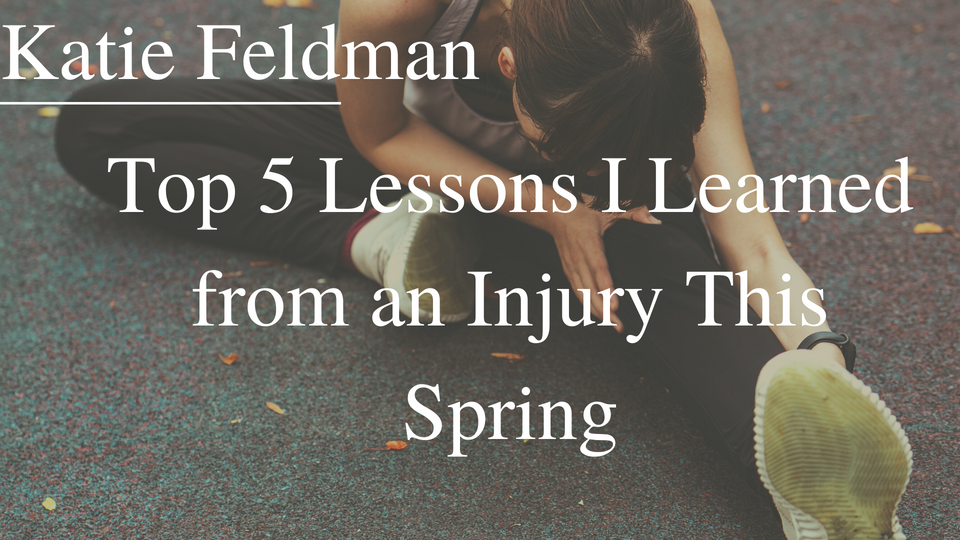Posted by Katie Feldman on Jun 9th 2022
Top 5 Lessons I Learned from an Injury This Spring
Hi SkiPost community!
Like many other US skiers, I traveled to Bend, OR a couple of weeks ago to train on snow at Mt. Bachelor and enjoy the many running and mountain biking trails in the valley. Bend is usually one of my favorite camps of the year. It’s hard to beat mornings on snow and beautiful dryland afternoons, and the distance from race season makes it a low-stress week. Unfortunately, I took a mountain bike crash early in the week that resulted in a dislocated elbow. I wasn’t going to be able to ski, bike, or run anytime soon, so I headed home to get things checked out by an orthopedist and start my recovery. My May has looked very different than in past years, and my June will as well. Crashing, whether off of a bike, rollerskis, or even running, is a possibility in all of our training, and most skiers will need to rehab an injury at some point in their career. There are ups and downs in the recovery process, so here are a few lessons I’ve learned.
- Crash well. I instinctually threw my arm out to catch myself as I was falling, this led all of my weight and momentum to load on my extended arm - I’m lucky I didn’t break my collarbone instead. Generally, rolling and sliding are better than sticking. You may end up with more scrapes/cuts/bruises, but you’re less likely to break bones. There are lots of videos on YouTube to help build better crashing instincts, and I highly recommend watching a few! Search “how to crash on a mountain bike” or “how to bail a MTB.”
- Training variation can be a good thing. I have not been able to use my regular training modalities of rollerskiing, mountain biking, trail running, or lifting weights. Instead, I’ve been road running, no pole skiing on the treadmill, and spin biking. While these are not my favorite activities, they have given me the opportunity to work on some of my weaknesses. For example, I can build tempo and foot speed that I don’t normally get through long mountain runs during my time on the road. Spin class has been an ideal way for me to incorporate high intensity sessions into my weeks, and forced no-pole skiing on the treadmill gives me the opportunity to focus on even leg pushes and a long glide phase.
- Get creative. Particularly in strength training, I’ve had to come up with other ways to fatigue my muscles. I can’t hold a bar or dumbbells quite yet, and it’s going to be a while longer before I’m doing any pull ups or pushups. Instead of pushing heavy weights, I’ve been doing a lot of body weight exercises with high reps. Paired with core exercises, I alternate walking lunges, single leg RDLs, and single leg squats. The internet is also full of fitness gurus who post 10-15 minute core workouts that I like to mix into my plan. Instead of doing a plank on my hands or elbows, I hold a different position on my back, like a boat pose. Creativity also applies to the rest of my day. I’m training a lot less volume right now, so I have more time. One of the ways I’m using this is to make more elaborate and creative dinners. Whether it’s trying out a new recipe or upgrading something I make regularly, I’m enjoying spending more time in the kitchen.
- Recovery is as important as ever. With my primary focus being healing, I’m paying extra attention to hydration, nutrition, and sleep. I’m working with a physical therapist to rebuild functional mobility and strength in my arm while also trying to maintain a somewhat regular training regimen. As we all know, there is a fine line between doing the right amount and doing too much. If I really hit PT after a lot of arm swinging in a no-pole treadmill session, I’m going to be achy and seriously uncomfortable later that day. This can result in having to take extra days off or feeling like I’m moving backwards in the recovery process. In strength, running, or spin training, I need to be careful not to totally wreck my legs in any one session since they’re my only option for the next.
- Patience. Spring is the best time to be injured because you have the most time to recover. I don’t need to stress about being able to single stick on rollerskis by a specific date because I’m so far out from race season. Instead, I’m motivated to take the best care possible of my body and work through PT with the goal of being able to return to all training modalities soon. Initially, patience was most applicable in the short term; I was unable to do simple tasks like tie back my hair or quickly chop food, and it took me much longer than normal to get dressed. In a larger view, it’s about remembering the big picture and remembering how much better things are today than a week or two ago. When I do get impatient or feel like I’m going backwards, it has been so helpful to have teammates and coaches reminding me of the movements I’m able to do this week that I wasn’t able to do last week. Ultimately, I know that the productivity and fitness gains of the training sessions I do now is lower than what I will be able to do when I’m fully healed, so it is okay to take a little extra rest and take a step back from activities that aren’t helping move me in that direction.

